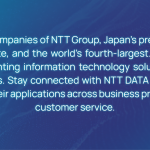Robotic Process Automation is a technology solution that brings many benefits to businesses. Their applications always receive many compliments from experts. Up to now, RPA has been doing well in its role in providing “virtual personnel” for businesses in many different fields: insurance, business.
In the future of Robotic Process Automation, RPA will become one of the useful tools that contribute to process automation and expand the efficient production system for businesses. The following article of WinActor will give you the best overview of robotic process automation in the future.
Quicker TAT and Delivery SLAs
SLA’s full name is Service Level Agreement. It is understood as a document describing the service level expected by the customer from a supplier. The SLA includes a metric to measure service and remedies or penalties when the agreed level cannot be achieved. Typically, an SLA is an agreement between a company and a supplier, or it can be between two company departments.
TAT’s full name is Turnaround Time. This is the time at which the specific process is agreed to be completed. The TAT is an indicator that may form part of an agreed SLA. TAT will combine “timeliness” and “completeness” measures to calculate the time to complete a process.
Applying RPA to the process will help improve SLA significantly because software robots can rely on data logs to provide important indicators that assess customer needs and the current state of the business. At the same time, software robots help speed up the completion of work. , improve the TAT time as desired.
New Jobs Roles, Greater Economic Impact
Currently, RPA is supporting businesses to solve repetitive tasks with fixed logic. Their employees will be relieved of work pressure, and at the same time, contribute to the release of human knowledge. Employees will be moved to positions that require gray investment, bringing more value to the business.
In the future, when RPA is optimized and has many new features, it will become one of the software super robots that contribute to improving the labor productivity of enterprises. Robots can take on more new jobs, having a dramatic impact on economics and business models. From there, the company will have a perfect “virtual assistant” to solve effective process automation for businesses.
Read more: Top 12 benefits of RPA (Robotic Process Automation)
Self-Learning & Real-Time Adaptability
RPA’s ability to work has achieved certain achievements. It contributes to thoroughly solving the repetitive work of the office block. RPA has an Unattended bot that allows users to process data on a large server without human intervention. This proves that the software robot is doing its job well. In the future, this is one of the great advantages of RPA when many businesses want to own a smart application that can handle a huge data block on the system.
In addition, RPA has real-time adaptability. Specifically, it can work flexibly 24/24 without being constrained by time. Therefore, businesses can activate automation robots at any time in the day. From there, they will make full use of the robotic workforce as well as improve work efficiency.

Business Process Management Will Replace Business Process Outsourcing
Business process outsourcing is threatened by process automation. However, RPA can not always replace BPO to do the job. Instead of seeing RPA as a threat, most BPO companies have moved software robots to new opportunities, using technology to improve service quality and reduce costs. Here are some areas where a BPO company can apply RPA to their process:
- Input data
- Data validation
- Handling files and data
- Auto Format
- User interface manipulation
- Multi-format message handling
- Text Mining
- Data integration like upload, export, download, and import
- Workflow-based jobs
- Workshop on handling exchange rates
When Disjointed Tech Converges For Sector Verticals
For some insurance companies, customer service is extremely important. Employees will have to use many different systems to be able to provide complete information to customers. Therefore, it makes perfect sense to apply RPA to the company. Because it will provide all information in a short time and integrate with many other technologies to improve the quality of work. In addition, the software robot has the feature of efficient process expansion, which is compatible with much other software.
Taking the Robot Out of The Human
Why is everyone saying “Put robots away from humans?”. Because the inventors want the robot to work independently without human intervention. From the very first versions, it solved repetitive tasks with absolute precision. Enterprises only need to install the process and set up the runtime for the software robot. For the rest, RPA will start and run the process on its own.
RPA Will Evolve Into Intelligent Automation
In the beginning, RPA will probably only perform tasks of fixed logic. But in the future, when RPA has more new features. It can be developed into an intelligent automation robot to easily integrate with many modern technologies and meet enterprises’ needs.
In addition, if RPA can develop more in artificial intelligence, it will certainly become a software super robot because software robots will have two factors simultaneously: The ability to work accurately and the intelligence of AI.
Augmenting Human Intelligence
Many people wonder, “What can RPA do?” Here are some applications of RPA:
- Open emails and attachments
- Login to web/enterprise applications
- Move files and folders
- Copy/paste information
- Fill out the forms
- Read/write to the database
- Get data from the web
- Connect to System API
- Extract structured data from documents
- Collect social media analytics
- Follow the “if-then” rule
These are the jobs where RPA replaces people. In addition, today’s software robots are constantly evolving to improve many new features. In the future, when RPA is smarter and more complete, the application of enterprises to the production process will be optimized, significantly improving labor productivity.
A HumaBot Paradigm
Integrated RPA bots to accelerate workflow and automate processes. Here, employees will create a working environment where the robots are considered official employees of the business. It can do almost all work without human intervention. From there, companies will have abundant human resources with the best quality.
Mainstreaming of Central Nerve Center
RPA can be integrated with the central nervous system to create a perfect machine. Specifically, it will provide context to the client and coordinate the process setup with other tools. From there, businesses can consistently approach short-term and long-term goals.
Robotic process automation in Banking
Banking is one of the fields that require employees to work with concentration and withstand pressure at work. Therefore, the application of RPA in the bank helps relieve stress on employees. For example, this software robot can replace humans with some tasks: creating invoices, making reports, or setting up credit card verification processes. From there, banks will save a lot of time as well as improve the quality of customer care services.
Certainly, in the future of RPA will have many new changes in technology , giving businesses many useful tools. Therefore, Enterprises can take advantage of RPA solutions to solve problems related to process automation and improve labor productivity.
Read more: 10 use cases of RPA in banking industry

WinActor is an RPA software solution by NTT DATA Corporation to help businesses master technology, create breakthroughs in the digital age 4.0.





